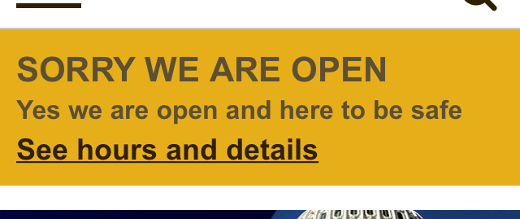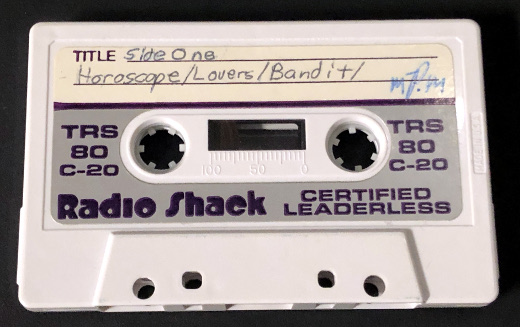Connecting With A Colleague

In today’s remote working environment, often we struggle to connect with people we work with who are also in the same boat. However we soon forget that when we were working in the same office and sitting around the same table with these same people, we still had this problem. I had a challenge like to this once with a teammate that I, as well as others, hadn't really connected with. I decided to make the extra effort to bridge the gap with this person, all to a successful outcome.
At the time I was with an international firm on an international project based in Boston. On the project was a mix of people from the Boston area, around the US and a few from around the world. One in particular was from Australia. When he came into the office, his presence was known. He dressed a little differently from the rest of us had a certain swagger. Not to forget he had a unique accent. None of this really mattered to me, and I introduced myself to him and told him I looked forward to working with him. Despite this initial outreach, I wasn’t really sure he felt the same towards me.
Often this colleague and I were in the same meetings, representing our teams on the project. I learned quickly he didn’t mix words and would speak honestly, though not always the most appropriately, at least by American standards. Often he would mix colloquial terms from Australia into work discussions, causing people to scratch their heads. As a result, many people focused on how he was saying something rather than what he was saying.
I looked at this situation differently. Here was someone who had come from another part of the world and was now stationed in Boston; though Boston is a very international and cosmopolitan, it still harken back to its conservative colonial roots. He came into this ever-expanding group and was trying to make a name for himself.
A Literally Off The Shelf Solution
One day I looked ahead and saw I was scheduled to be in a meeting with him the next. That night I was thinking of how I could finally break the ice with him. As I looked around my home office I found the answer sitting on my bookshelf. The next day I brought it in to work, a book of Australian slang. It was given to me years earlier by another colleague from Australia. It was a rather thick book, the size of large novel. Even though I had held onto it for years, I never thought it would come in handy in this capacity.
As we gathered the next day in a conference room, I sat directly across from my colleague from Down Under. Just as a meeting started, I looked across the table at him and taking the book out, I slammed it on the middle of the table. As did, I said something to the effect that he wasn’t going to get away with using any Australian slang expressions on me any longer.
To this he was a at first taken aback, then he looked straight at me and smiled. From that point forward, we had a much better working relationship, and I got to know him more personally as well. It all happened because I was simply willing to work to make a connection with him.
Deconstructing Connecting with Colleagues
Every situation is different and sometimes we don't always get it right. When it comes to personalities, I feel it's definitely worth trying to connect with people. Many times just from that effort we can gain appreciation and for each other and work well together.
This is from The Hot Iron, a journal on business and technology by Mike Maddaloni.
Did you enjoy this? Subscribe to The Hot Iron by RSS/XML feed or Read by Email
Business • Strategize • (0) Comments • PermalinkMy Losing 53-Word Story Contest Entry

Several years ago I “got into” writing. Granted, I was blogging here at The Hot Iron for over a decade at that point. Even with a body of work – some of it even beyond the world of business and technology – I never considered myself a “writer” per se. Visiting the Lit Fest in Chicago and taking it all in for the first time, a mere few blocks from my then home, was the boost I needed. Where I haven’t published yet beyond this Web site, I have expanded on what I write here, and have in various stages pieces in need of time to finish and submit for possible publishing.
That is if you don’t count some short stories I have submitted recently. And the emphasis here is on short – as in 53 words short. On and off for the last year I have submitted entries for the monthly 53-Word Short Story contest by Press 53, a fiction and poetry publishing house in North Carolina. I discovered this when looking for writing contests for one of my kids, who at one point was interested in such contests then later wasn’t. However I got bitten by this serial unique challenge.
For August’s contest, the writing prompt was to write about “Sunday.” That’s it, that’s all they give you, and it is up to your creativity – and brevity – to craft something unique and prize-winning. As you can tell by the title of this post I did not win, and as a result my prose will not be published in one of their journals.
But as words must be free, I share “Any Given” with you here:
"While awaiting our lobsters to brighten, we slurped steamers – simmered in Harpoon IPA, from the same Portsmouth dock as the crustaceans. Aptly accompanying our ocean harvest was corn on-the-cob, homemade potato salad and more of said IPA.
Ten o’clock may seem early for such a feast, but there’s only three hours till kick-off."
The preceding is a true story, as annually we would have a lobster bake during one week’s tailgating before a New England Patriots home game back in the day.
If you’re so inclined you can read the winning entry here, learn about this month’s contest and how you too can compete with me for the fame and glory of a very, very short story.
Deconstructing Short Story Writing
Writing can take many forms. What I originally saw as business and technology writing was in reality story writing, and upon that realization it opened and expanded my mind to what else I could write. But I will save an in-depth deconstruction for another time – just get out there and write!
This is from The Hot Iron, a journal on business and technology by Mike Maddaloni.
Did you enjoy this? Subscribe to The Hot Iron by RSS/XML feed or Read by Email
Announcements • Diversions • Strategize • (4) Comments • Permalink7 Vital Web Site Updates For The Pandemic

As businesses and individuals return to work, of equal importance to safety and protection is communications – we need to know as much as possible to make informed decisions. One area I have found lacking is with the Web sites of businesses and professionals. Many sites I see in the course of trying to return to normal suffer from a dearth of vital information needed for people to determine if they are still operating or not, and if so how.
Here I offer seven recommendations for your Web site to indicate the status of your business and how to help return to normal as possible these days.
Add alert functionality upfront – If there’s something important you want people to know, put it right up front. How? You can have a brightly colored alert banner anchored to the top of your home or all Web pages to inform people. A browser pop-up can also achieve this. As you may not have this functionality already, you might have to check with your Web site consultant or look into the services of your Web site platform to see how you can gain this. It may be easier than you think, and even if it comes with a cost, it will be well worth it.
Are you open? – This may be obvious to you the business owner, but not all Web sites I visit make it clear. The messaging may be nested into the design of the site but not easily found. Using the alert functionality mentioned above is one way to achieve this. Another is to look at all of the content of your site and make whatever adjustments needed to indicate so.
Update location, hours and contacts – Due to changes in your business, have you relocated? Did you change your hours? Do you have different contact information? Is this new information reflected on your Web site? If not, it should be.
Changes to your business practices – If the experience your customers will have with you has changed as a result of COVID-19, indicate this on your Web site. Will someone have to wear a mask? Do you have shielding in place? Is distancing required? This is important for people to understand if they can still do business with you and will give them the peace of mind they may need that it's safe to do business with you.
Add social media feeds to your site – Many businesses and individuals are updating their social media accounts more than their Web site. Why not kill two birds with one stone and put the feeds from your social media accounts onto your home page? How to do this varies depending on your site and you should follow the previous tips on checking your Web site provider or consultant.
Start an email list – Many businesses found out the hard way when they had to shut down that the only contact with their customers was when they came through their door. As my good friend John Wall says on his Marketing Over Coffee podcast, you've got to have a house list. Every business, every professional should have an email list with the sign up on the Web. There are many different services where you can set up a mailing list, some are even free. For example, if you are reading this by email, I use MailChimp in order to create and send the emails from my RSS feed. You can customize templates and the content to send to your customers and contacts.
Add e-commerce – There's no time like the present to take online payments or sell products and services online. Just last week, Chipotle just started doing this by selling clothing and other items online. Now the company that was all about selling burritos and bowls is now into merchandising. If you don't have a specific new product idea, simply having the ability to take credit cards is important. It can be as simple as setting up a PayPal account and pay by the transaction by transaction, then upgrade to a credit card service when you get more volume.
Deconstructing vital Web site updates
As social media and other services have evolved, much business content and functionality, even e-commerce, uses them. Your Web site may have been neglected or completely out of sync with other messaging you have out there. As Coronavirus remains out there, I recommend these vital Web site updates to ensure it remains an integral part of your business.
This is from The Hot Iron, a journal on business and technology by Mike Maddaloni.
Did you enjoy this? Subscribe to The Hot Iron by RSS/XML feed or Read by Email
Business • Strategize • Web Design • (2) Comments • Permalink5 Ways I Wish Business Was More Like Sports

With professional baseball finally – well, at least as of this writing – starting to come back this year, I have been thinking more about it and other sports, especially how teams and the league are structured. In keeping with the mission here at The Hot Iron, my mind has been pondering how the business world could benefit from being more like professional sports.
Now before you the fair reader says, “hey, pro sports ARE businesses” let me elaborate. First, I concur, as you can’t have teams worth multi-billions and players making multi-millions and not be a business. Where I think they can be more alike, it’s certain aspects unique to sports that would be welcome and refreshing complements to the business world.
And now, ladies and gentlemen, here’s the starting line-up for my 5 ways I wish business was more like sports.
Minor leagues – When you get a job with a company, you are working right away. Some firms may have a training program, and many have a probationary period, but those are in place to get you up to speed and to fire you if need be, respectively. If you are new entering the workforce, say from school or perhaps not, or if you are switching careers, having a minor league system would be a great way to develop your skills and abilities, all the while actually producing.
By being in a minor league system in business, it’d be known that it is still the minors, and expectations would be somewhat different. Such differences could be in your pay and the cost of your services. When you are ready to perform at the top level, you would join the majors. If you never achieved that level, you could stay in the minors or maybe switch careers. In either case the minor leagues of business can be a place to develop the best and brightest people.
Free agency – Talk about the ultimate transparency, as everybody knows what an athlete makes and what the terms of their contracts are. What if that was the same in business, where it is completely the opposite and as non-transparent as one can imagine.
What you are worth to the marketplace would be well-known, and if your current employer couldn’t offer it to you, you could easily go elsewhere, being a free agent. Sure, being a contractor in today’s business environment is a close approximation, but the knowledge of who’s out there and available in any profession or discipline would not be as much of a mystery as it is now.
Working 162 days a year – That’s the number of games in a traditional Major League Baseball season, and other sports have fewer. When you are only working those days, it doesn’t mean you are idle the remainder of the year. When not in a game you are training, relaxing, recovering, getting physical therapy or even meditating.
What if the business work schedule allowed for you to have designated working days and designated training days, days in the middle of the week, and not just at night or the weekends? This way you can prepare better for your work time, ideally correlating to you being more productive and efficient.
No stigma to getting fired – When you get fired in business, it is a bad situation. How many people go around saying, “hey, I got fired?!” There are many reasons why people are fired, including lack of management oversight, new leaders or a change in direction in a company or group. Many times, it is simply personality conflicts. Or simply they could have made mistakes worthy of their termination. Getting fired doesn’t mean you don’t have the skills to do your job. That being said, you are not going to go out looking for a new job saying you were fired from your last one.
In sports, it’s the opposite. Players are getting cut all the time, and many times their unemployment is short as another team signs them. Coaches are getting fired all of the time, only to emerge wearing another team jacket the next season. In all cases it was well-known that the coaches or players were fired, yet nobody is shouting at them during a game because of what they did for their last team. Both players and coaches can perform poorly one season and thrive and win the very next one for a variety of reasons, such as the organization they go to has a much different culture or “system” which works better for them.
Spring Training – In business, an annual kickoff for the new year could be a weekend away for some senior leaders, but for the majority it is a meeting or, these days, a Webinar. What if business had a true spring training, as baseball does, where you get out of the normal office, get some training and bond with your co-workers, and plan and prepare for the upcoming calendar or fiscal year?
Deconstructing Business Being More Like Sports
The way sports have traditionally operated lends to the structure and elements as I have outlined here. As sports have evolved, players and coaches are “working” year round, just as a standard business does. I present here how I have imagined how business can leverage some of these elements from sports, and feel it could transform how businesses function and perform. Isn’t it worth a try to change business as usual?
This is from The Hot Iron, a journal on business and technology by Mike Maddaloni.
Did you enjoy this? Subscribe to The Hot Iron by RSS/XML feed or Read by Email
Business • Strategize • (2) Comments • PermalinkLearning To Code In the Early 1980s

With all of the focus and attention these days on teaching kids about STEM (science, technology, engineering and math), it has triggered me in a positive way to recall when I myself learned how to write computer code back in the early 1980’s.
Now before you rush to judgement and say there is no comparison of the world today in 2020 to nearly 40 years ago, I’ll somewhat agree. The technology itself today is vastly different now than from then, however there are similarities in how I got started with computers and how my interest progressed.
Where It Began
This flashback is truly a journey, back in time and over many miles from where I am now. My junior high school in Massachusetts was the scene. One day in my math class, instead of getting to use basic-function calculators that were locked in a wooden case, 3 carts were wheeled in to the classroom with a Commodore PET computer on each of them. Little did I know how this would be the catalyst of my passion for technology.
Be aware the mobile smartphone you may be reading this post on has orders of magnitudes more power, memory and storage that all 3 of those PET computers combined. Let alone the fact the screens were monochrome (aka black and white) as compared to the rich colors in the palm of your hand. That being said, those computers with their cassette tape drives (we had no floppy disk drives then) had much more power than the calculators we usually got to use and we didn’t even realize the powerful tool that was put in front of us.
Tool, or should I say toy? All we usually did in math class with the computers was play games. Sure, the intent of these computers in the classroom was to expose us to the early-stages of the concept of personal computers, from typing commands to loading software from the cassette tape drive and running said software. Despite these “skills” we were learning, it wasn’t enough for me. I didn’t want to just play games as my classmates were content with, I wanted to write games!
Geek Quest
If I only had a picture of the face my teacher made when I asked her how to write software to program the PET computer. After her initial shock, she admitted she didn’t know, but there was another math teacher, Mr. Palmer, who she thought could help me. I didn’t have him for a teacher before and didn’t know him at all, and back then it was unusual to get such guidance or training from another teacher. But I wanted to learn how to write code, so I was connected with him by my teacher.
This unassuming introduction was a pivotal point in my life. And in middle school no less! Mr. Palmer proceeded to tell me the games and programs I was using on the PET were written in the BASIC programming language. He lent me a book on learning BASIC that he had, gave me some pointers and suggested I start reading this, and he would help me with any questions I had. He also said there were other books on BASIC and that other computers ran programs written in BASIC too, so I could look into those as well. Armed with this knowledge and direction, I was off and was writing my first BASIC programs by literally writing them with a pencil and paper. I did this at home or in study halls, and then when I got time in front of the computer, I would type them into the computer and save them to a cassette. The photo above in this post is of one of the cassettes I recently rediscovered from those days.
This geek quest was a solo one, however, as I was the only kid in class who wanted to write code. When it came time to use the computers in math class, of the 3 computers I would always get one to myself. Some kids complained, but overall they didn’t seem to care as long as they got a chance to play games in class.
What’s Your Sign?
My first programs were short ones that didn’t do a whole lot – clear the screen, scroll text, basic math – and I wanted to do more. The idea came from somewhere (sorry, I don’t recall all of the details of this time!) to write a program that would tell your horoscope. So I came up with a simple premise, you type in your astrological sign, spelling it exactly (even Sagittarius), and a preset silly horoscope for you would be displayed on the screen. If you know anything about programming languages, it was a giant If-Then-Else statement. But it was my If-Then-Else statement.
After some toil and testing, the program was done. I showed it to Mr. Palmer and he liked it, so I then let my math classmates give it a try. For as simple as it was, some of them were actually impressed that I was able to create such a program. And with this, I wrote the first of many, many computer programs I would over the next decades.
To Infinite Loop And Beyond
From this humble beginning, I learned more “advanced” features of the BASIC language. As I moved into high school I had access to the school’s mainframe, a Digital PDP-11, as well as eventually my own computer at home, a TRS-80 Model III. With these 2 platforms my learning took off, exploring more complex aspects of programming, the hardware of the computers and my first foray into going “online” with dial-up computer bulletin boards. Along the way I also had my first computer consulting gig in high school. Next came college and a degree in Computer Information Systems, and the career I have talked about much here in this blog.
Deconstructing Learning to Code
In the beginning of working with computers I had a mentor who guided and encouraged me – thank you Mr. Palmer, wherever you are! Over the years and many miles from the junior high school, it’s nice to reminisce about those exciting early days of computing and the enthusiasm I have had for technology. This guidance was important for me then, just as it is critical for young people today to also be inspired in a career in high technology.
This is from The Hot Iron, a journal on business and technology by Mike Maddaloni.
Did you enjoy this? Subscribe to The Hot Iron by RSS/XML feed or Read by Email
Build • Strategize • Technology • (0) Comments • Permalink
